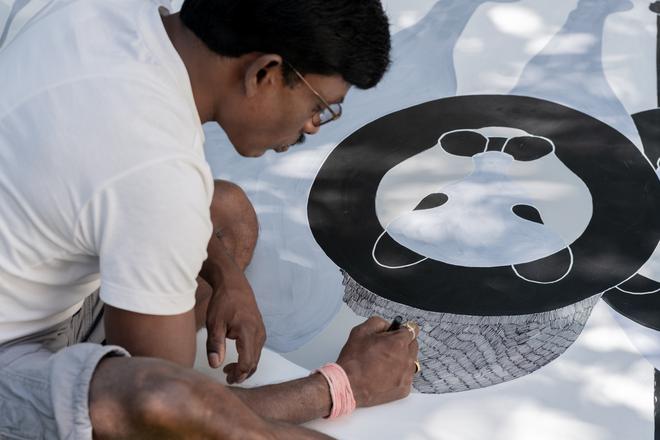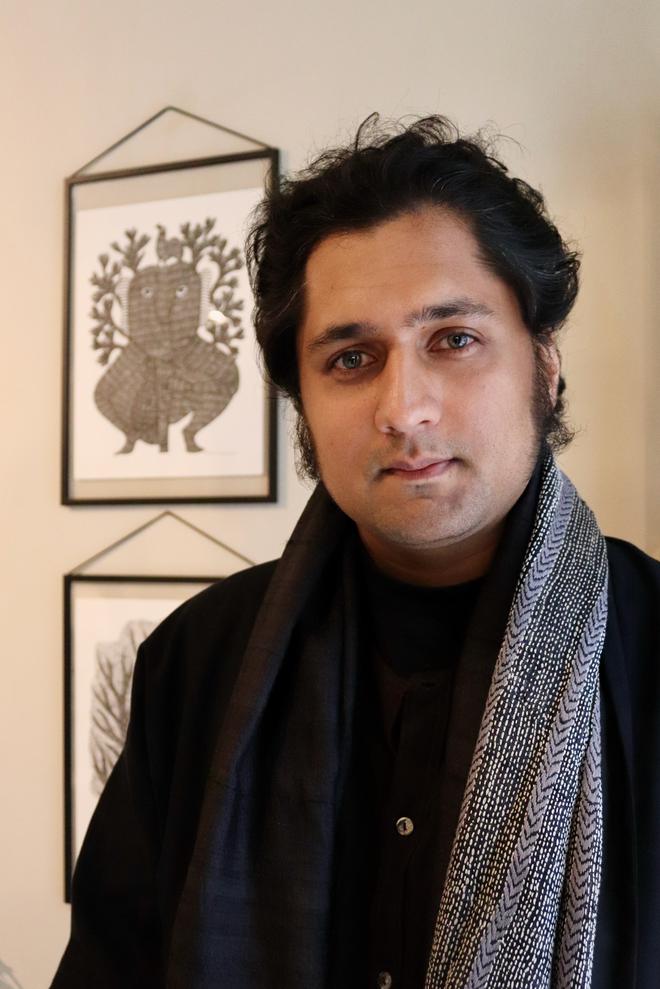From the earliest examples of prehistoric rock paintings to the 16th century murals at the royal palace in Bundi, Rajasthan, right up to the graffiti street art of today — the impulse to decorate walls has always existed throughout human history. In fact, across India, ancient traditions of wall adornment continue to thrive, reinforcing the point that decorating lived spaces with markers of our experience and worldview is an instinct we cannot ignore.
Collecting is the other face of the coin to creating, a gesture born out of a visceral response to beauty and a desire to enrich life by claiming a piece of human creativity. Today, conversations on collecting are often clouded by the dizzying price tags attached to works created by ‘star artists’. But tribal Indian art is a wonderful and affordable gateway to bringing the joys of art into our lives. Created to mark moments of celebration or community spaces, natural mud brick walls become canvases for beauty and beliefs intricately intertwined. However, what was typically wall-based and location-specific art forms are now seen in tastefully designed homes across the country, and are rightfully treasured as art.
While Jangarh Singh Shyam, the tribal artist from Madhya Pradesh, was one of the first artists to take indigenous art into the museum and gallery space, more recently, galleries across India (ARTISANS and Baro Market in Mumbai stand as two strong examples) are increasingly representing artists with practices that carry a contemporised take on their community’s artmaking traditions. This is not a sign of rebellion against the old, but rather a celebration of the interpretive possibilities inherent within these centuries-old, community-based forms of expression.
This potential is also being harnessed and celebrated in an exhibition titled ‘Thinking Hands’, currently on view at the art collector Sridhar Poddar’s Kaash in Bengaluru. In their latest exhibition, they have worked with five artists across the indigenous art forms of Warli, Gond and Mandana to create an immersive exhibition experience of new representations of traditional art forms through experimentation with scale and materials.

The exhibition is the result of a month-long artist residency workshop with the artists Mayur and Tushar Vayeda (Warli art), Sunita Meena (Mandana art), Gareeba Singh Tekam and Ram Singh Urveti (Gond art). The residency created the space and infrastructure for them to explore new material dimensions to their practice, working with a range of new surfaces such as Corten Steel, wood, and blackboard (wood with porcelain enamel) while engaging in dialogue with each other’s practices that are deeply rooted in the stories of their communities.
Set across multiple exhibition rooms, the exhibition has a sophisticated, muted approach that allows the artworks to shine. For instance, Gareeba Singh Tekam’s double-headed lion, a striking acrylic on blackboard diptych piece in black and white, is set against a complementing monochrome wall, creating a perfect pool of ponderance. In another space, Sunita Meena’s kaleidoscope world of animals — acrylic paint on wood rendered in the traditional way of finger painting — sits as an impressive toran on an archway. The Vayeda brothers present a stunning triptych of a treescape titled ‘Roots, Ancestor and Hope’, their distinctive, delicate interpretation of Warli art on Corten steel.

“High profile clients have begun looking beyond contemporary art for their collections,” says Sridhar Poddar. “Indeed, craft collectibles set their collections apart as new forms of value. Buyers are even looking at displaying their acquisitions from Kaash in creative ways. For instance, one of our collectors is using a wooden Meena work from the Thinking Hands show as a headboard for her bedroom.”
‘Thinking Hands’ presents an opportunity for us to explore new perspectives on contemporary tribal art and perhaps engage with it as patrons committed to championing artists with a story to tell. The artworks, presented as ‘craft collectibles’, make a compelling case for looking at this category through a new lens, and indeed, encourages one to do away with categories and hierarchies altogether.
‘Thinking Hands’ is at Kaash, Bengaluru, till June 30.







